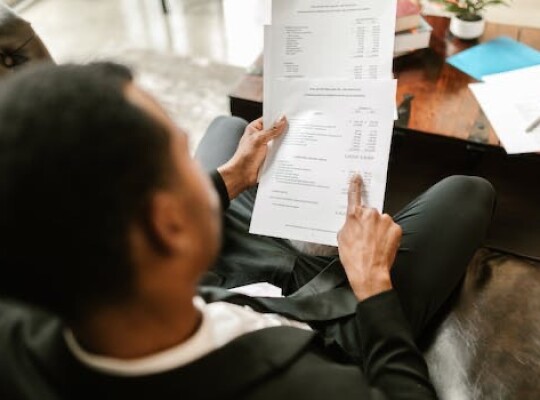Recurring expenses are a crucial part of our financial lives. Understanding how they work, their impact on our budget, and how to manage them effectively can greatly improve our financial well-being. In this article, we will dive deep into the world of recurring expenses and explore various strategies to handle them wisely.
Understanding Recurring Expenses
Before we explore the intricacies of managing recurring expenses, let’s start by understanding what they are and the different types they can take. Recurring expenses refer to the regular payments we have to make on an ongoing basis. These expenses can be classified into two main categories: fixed and variable.
Fixed recurring expenses are those that remain constant each month. These are the financial obligations that we can’t avoid, such as rent or mortgage payments, insurance premiums, or subscription services. Rent or mortgage payments are often the largest fixed recurring expense for many individuals or families. It is the cost of having a roof over our heads, providing us with a place to call home. Insurance premiums, whether it’s for health, car, or home insurance, are necessary to protect ourselves and our assets. Subscription services, like streaming platforms or gym memberships, are recurring expenses that we willingly take on for entertainment or personal well-being.
On the other hand, variable recurring expenses are those that fluctuate in amount but occur regularly. These expenses can vary from month to month, making them a bit more unpredictable. Utility bills, for example, can fluctuate depending on the season or our usage. During the summer months, air conditioning can lead to higher electricity bills, while in winter, heating expenses may increase. Groceries are another example of variable recurring expenses. The amount we spend on food can vary depending on our dietary preferences, the number of people in our household, and even the cost of ingredients.
Definition and Types of Recurring Expenses
Fixed recurring expenses are those that remain constant each month, such as rent or mortgage payments, insurance premiums, or subscription services. On the other hand, variable recurring expenses are those that fluctuate in amount but occur regularly, like utility bills or groceries.
Understanding the different types of recurring expenses is crucial for managing our finances effectively. By categorizing our expenses into fixed and variable, we can better allocate our budget and plan for the future. It allows us to have a clear overview of our financial obligations and make informed decisions about our spending habits.
Importance of Tracking Recurring Expenses
Tracking recurring expenses is essential for maintaining financial control. By monitoring these regular payments, you gain a clear understanding of how much you spend each month, identify areas where you can potentially save money, and make informed choices about your financial priorities.
When we track our recurring expenses, we can identify patterns and trends in our spending habits. For example, by analyzing our utility bills over several months, we may notice that our electricity consumption is higher during certain periods. This awareness can prompt us to take steps to reduce our energy usage and lower our bills. Similarly, tracking our grocery expenses can help us identify areas where we can cut back on unnecessary purchases or find more cost-effective alternatives.
Moreover, tracking recurring expenses allows us to prioritize our financial goals. By understanding how much we spend on fixed expenses, we can determine how much we have left for other financial objectives, such as saving for emergencies, investing, or paying off debt. It helps us make informed choices about where we want our money to go and align our spending with our long-term financial plans.
In conclusion, recurring expenses are an integral part of our financial lives. By understanding the different types of recurring expenses and tracking them diligently, we can gain control over our finances, make informed decisions, and work towards achieving our financial goals.
Impact of Recurring Expenses on Your Budget
Recurring expenses can significantly impact your monthly budget. They are often the largest portion of your regular financial obligations and can eat up a substantial portion of your income. Understanding this impact is crucial for maintaining a balanced budget and achieving financial goals.
Recurring expenses come in various forms, such as rent or mortgage payments, utility bills, insurance premiums, and subscription services. These expenses are called “recurring” because they occur regularly and require consistent payments. While some recurring expenses are necessary for daily living, others may be discretionary and can be adjusted to fit your financial priorities.
How Recurring Expenses Affect Your Monthly Budget
When you add up all the recurring expenses, it becomes evident that they can consume a significant portion of your income. It is essential to evaluate each expense and determine its impact on your budget. By analyzing your budget and identifying which recurring expenses are essential and which can be reduced or eliminated, you can create more room for savings or allocate funds towards other financial priorities.
For example, if you find that your monthly subscription services are taking up a significant portion of your budget, you may consider canceling or downgrading some of them. This adjustment can free up funds that can be redirected towards building an emergency fund, paying off debt, or investing for the future.
The Role of Recurring Expenses in Financial Planning
Financial planning is incomplete without considering recurring expenses. When mapping out your long-term financial goals, it’s essential to factor in these regular payments to ensure your budget aligns with your aspirations. Combining long-term planning with the management of recurring expenses allows for greater control over your financial future.
By understanding the impact of recurring expenses, you can make informed decisions about your financial priorities. For instance, if your goal is to save for a down payment on a house, you may need to adjust your recurring expenses to allocate more funds towards your savings. This may involve finding ways to reduce your utility bills, negotiating lower insurance premiums, or exploring alternative housing options.
Furthermore, recurring expenses can also provide an opportunity for financial growth. For example, if you consistently pay your rent or mortgage on time, it can help build a positive credit history, which can be beneficial when applying for future loans or credit cards.
In conclusion, recurring expenses play a significant role in your monthly budget and long-term financial planning. By carefully evaluating and managing these expenses, you can create a more balanced budget, achieve your financial goals, and pave the way for a secure financial future.
Managing Your Recurring Expenses
Now that we understand the impact of recurring expenses on our budget, let’s delve into practical strategies for managing them effectively.
Recurring expenses can often be a significant drain on our finances, but with the right strategies in place, we can take control of our budget and find ways to reduce these costs. By being proactive and implementing some smart tactics, we can free up more money for savings or other financial goals.
Strategies for Reducing Recurring Expenses
Reducing recurring expenses requires a proactive approach. Start by reviewing all your regular payments and identifying areas where you can make cuts or negotiate better deals.
One effective strategy is to consider switching to cheaper alternatives for certain services or products. For example, if you’re paying a high monthly fee for cable television, you might explore streaming services that offer a more affordable option without sacrificing your favorite shows and movies.
Another approach is to shop around for better insurance rates. Many people simply renew their policies without considering other options, but by taking the time to compare rates from different providers, you may be able to find a better deal that saves you money each month.
Additionally, it’s important to evaluate your subscriptions and memberships. Are there any that you no longer use or could live without? Cancelling these unnecessary subscriptions can help trim your monthly expenses.
Tools for Monitoring Your Recurring Expenses
Technology can be a powerful ally in managing your recurring expenses. Utilize budgeting apps or personal finance software to easily track your regular payments, set alerts for due dates, and analyze your spending patterns.
These tools provide valuable insights into your financial habits and help you stay on top of your financial obligations. By having a clear overview of your recurring expenses, you can identify any areas where you might be overspending or where you can make adjustments to save money.
Furthermore, budgeting apps often offer features like expense categorization and budget goal setting, allowing you to allocate specific amounts for different categories and monitor your progress. This level of visibility can be incredibly helpful in managing your recurring expenses effectively.
Remember, managing your recurring expenses is an ongoing process. Regularly reviewing your payments, exploring cost-saving alternatives, and utilizing technology to track your spending can help you stay on top of your budget and make informed decisions about your financial future.
Planning for Future Recurring Expenses
In addition to managing existing recurring expenses, it’s important to plan for future ones. By predicting and preparing for upcoming financial obligations, you can avoid any sudden shocks to your budget and maintain stability in your financial life.
When it comes to planning for future recurring expenses, there are several factors to consider. One important aspect is to take the time to anticipate these expenses. This could include planning for home maintenance, annual subscriptions, or other known upcoming obligations. By saving a little each month towards these future expenses, you can alleviate the financial burden when they arise.
Another crucial step in preparing for future recurring expenses is incorporating them into your long-term financial goals. Long-term financial goals require careful consideration of recurring expenses. Whether you aspire to buy a house, start a business, or retire comfortably, factoring in your regular financial obligations enables you to create a realistic and achievable plan.
When structuring your goals, savings, and investments, it’s important to keep recurring expenses in mind. By doing so, you ensure steady progress towards your aspirations. For example, if you plan to save for a down payment on a house, it’s essential to consider not only the mortgage payments but also other recurring expenses such as property taxes, insurance, and maintenance costs.
Moreover, incorporating recurring expenses into your long-term financial goals allows you to make informed decisions about your financial priorities. It helps you determine how much you can allocate towards savings, investments, and discretionary spending while still meeting your regular financial obligations.
By taking a proactive approach to planning for future recurring expenses, you can avoid financial stress and maintain control over your budget. It’s important to regularly review and reassess your anticipated expenses to ensure that your savings and budgeting strategies align with your financial goals.
In conclusion, understanding and managing recurring expenses is key to building a solid financial foundation. By grasping the impact of these regular payments, implementing effective strategies, and incorporating them into your financial goals, you can take control of your financial future and pave the way for a more secure and prosperous life.
The Emergence of Recurring Expenses
Recurring expenses encompass the weekly, monthly, or yearly costs that a company incurs. While these costs might seem minimal when evaluated individually, they accumulate over time and can significantly impact the company’s bottom line. As your business grows, the number and size of these recurring costs are likely to increase.
With the surge of the subscription economy, businesses are required to monitor and manage more service subscriptions than before. It’s projected that by 2024, over 45% of IT budgets will be allocated to cloud services like Software as a Service (SaaS) and Infrastructure as a Service (IaaS).
The increase in invoices for recurring services necessitates that businesses keep a close eye on these expenses and ensure timely payments. If not adequately managed, these recurring costs can quickly become a considerable drain on your resources. With this type of growth, traditional methods of tracking operating costs, such as using a calendar and Excel spreadsheets, are no longer sufficient.
Defining Recurring Expenses
Recurring expenses are typical, ongoing costs associated with running a business in its chosen industry. These costs are considered indirect and are included in the company’s income statements. They also need to be accounted for in balance sheets and cash flow statements.
Recurring expenses necessary for operating a business include executive salaries, employee wages, research and development costs, travel-related expenses, computer support services, and long-term depreciation of property, equipment, and other assets.
Indirect recurring costs like rent, utilities, and insurance form a significant part of typical recurring expenses. They are often seen in the income statement after the calculation of net revenue and are combined to get the total operating income.
Businesses may handle the accounting of recurring expenses differently depending on their operations. Some companies may group their recurring expenses under a single heading like “SG&A” or “General & Administrative.” Recurring expenses feature in both the cash flow statement and the balance sheet, where they are categorized as liabilities.
Deciphering Nonrecurring Expenses
Nonrecurring expenses are less predictable and harder to budget for. These are costs that a business doesn’t expect to recur in the foreseeable future and are labeled as unusual or one-time on a company’s financial accounts.
Events that can trigger nonrecurring expenses are varied and these costs could significantly differentiate between GAAP and non-GAAP reporting. Nonrecurring costs include expenses incurred during a merger or acquisition, purchase of real estate or equipment, large-scale facility upgrades, workforce reduction-related severance pay, or repair costs incurred due to a natural disaster or accident.
Nonrecurring expenses are usually recorded as current liabilities or other types of short-term liabilities in the balance sheet. They might also appear in the operating, investing, or financing sections of the cash flow statement.
Comparing Recurring and Nonrecurring Expenses
Comparing recurring and nonrecurring expenses is vital in understanding the different impacts they have on income and how they are measured.
Recurring expenses are different from sporadic or occasional costs as they occur regularly. Rent and utility payments, for instance, must be made on the first of every month. These expenses are often variable, can be reasonably estimated, and are often handled on an ad hoc basis.
Nonrecurring expenses, on the other hand, are one-time or infrequent expenses. They can result from extraordinary events like natural disasters or significant theft, which may result in a cost that isn’t expected or budgeted for.
While recurring expenses are typically incorporated into the item costs as overheads, nonrecurring expenses like one-time and consistently high quantum costs often do not form the basis of the item cost.
The Impact of Expenses on Income
The distinction between recurring and nonrecurring expenses is essential because of their unique impacts on income. Recurring costs form the total operating expenses of a company, incurred regularly. Fixed expenses are consistent regardless of whether the company continues to use the service, switches to a new provider, or reduces its reliance on the service.
Nonrecurring expenses, on the other hand, can have a significant short-term impact on a company’s profits since they aren’t planned for in advance. However, being one-off costs, they rarely have a lasting impact on the company’s financial health unless they are substantial enough to drive the firm into debt.
The Method of Measuring Expenses
Businesses track recurring and nonrecurring expenses differently. A company might measure its regular costs as a single total rather than a detailed list to simplify its books. This can include expenses like rent, insurance, raw materials, and employee wages.
Nonrecurring expenses, on the other hand, are broken down into parts and documented with the total amount, description, and date paid. For instance, the cost of property purchase, emergency cost, vehicle purchase, legal fees, etc., are some typical nonrecurring costs.
Automating Recurring Invoices with Genio
Recurring charges often use automatic billing schedules. During an automatic payment, a customer’s credit card is automatically charged once a predetermined transaction has been processed. After setting up, your recurring invoice may be issued manually depending on your delivery choices. Automating bills with software like Genio can save time and reduce stress.
The most advanced implementations of this software allow businesses to manage the entire process, from generating project estimates to keeping tabs on employee time and payments. If your business regularly bills customers using the same invoice, you may want to look into automated solutions and recurring fees.
FAQs
What is a recurring invoice?
A recurring invoice is a type of invoice that is scheduled to be sent out at regular intervals. This could be weekly, monthly, or yearly, depending on the nature of the transaction.
What is a nonrecurring expense?
A nonrecurring expense is a one-time or infrequent expense that a business does not expect to repeat in the foreseeable future. This could be due to an extraordinary event like a natural disaster or significant theft.
How does Genio help automate recurring invoices?
Genio provides a platform that allows businesses to automate their billing processes. This includes setting up recurring invoices, tracking payments, and managing customer information.
What are some examples of recurring expenses?
Some examples of recurring expenses include rent payments, utility bills, employee salaries, and insurance payments.
What are some examples of nonrecurring expenses?
Some examples of nonrecurring expenses include emergency costs due to natural disasters, costs associated with property purchases, vehicle purchases, legal fees, and machinery or tool purchases.
Understanding the different types of expenses that a business can incur is crucial for effective financial management. By distinguishing between recurring and nonrecurring expenses, businesses can better anticipate costs, budget accordingly, and ultimately ensure financial stability. Whether you’re a small business owner or a financial manager in a large corporation, it’s essential to keep track of these expenses to maintain a healthy bottom line.




